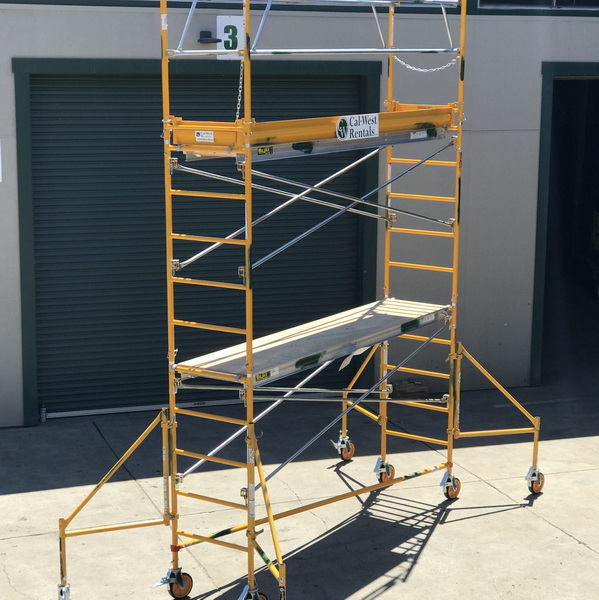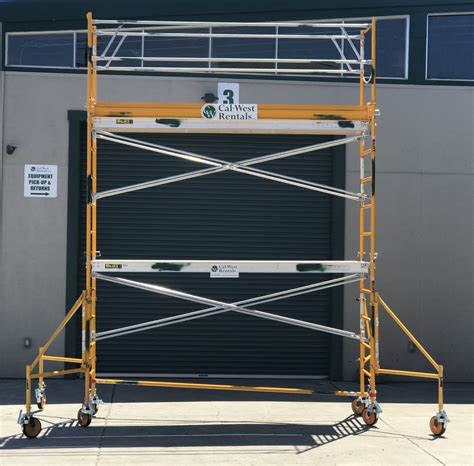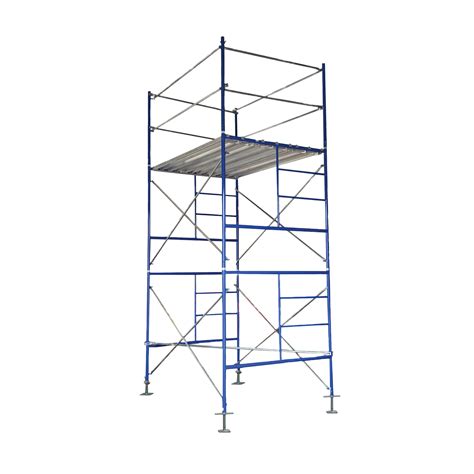Content Menu
● What is a Scaffolding Tube?
● Why Scaffolding Tube Thickness Matters
● Global Standards for Scaffolding Tube Thickness
>> Key International Standards
● Common Scaffolding Tube Thicknesses
>> Standard Sizes
>> Lengths
● Material Considerations: Steel vs. Aluminum
>> Steel Scaffolding Tubes
>> Aluminum Scaffolding Tubes
● How to Choose the Right Thickness
>> Factors to Consider
>> Consultation
● Risks of Using the Wrong Tube Thickness
● Scaffolding Tube Thickness and Load-Bearing Capacity
● Inspection and Maintenance
● Additional Safety Considerations for Scaffolding Tube Thickness
>> Practical Tips for Handling and Installation
>> Importance of Training and Supervision
● Conclusion
● FAQ
>> 1. What is the standard thickness for a scaffolding tube?
>> 2. Can I use a thinner tube if my scaffold is not very tall?
>> 3. How do I check if my scaffolding tube meets the required thickness?
>> 4. Are aluminum scaffolding tubes held to the same thickness standards as steel?
>> 5. What are the consequences of using non-standard or damaged tubes?
Scaffolding is a cornerstone of modern construction, providing safe and reliable platforms for workers at height. At the heart of every scaffold system lies the scaffolding tube-a seemingly simple steel or aluminum pipe, yet one whose thickness is absolutely critical for structural integrity and worker safety. This comprehensive guide explores the importance of scaffolding tube thickness, the global standards that define it, the risks of non-compliance, and practical considerations for choosing the right tube for your project.

What is a Scaffolding Tube?
A scaffolding tube is a cylindrical pipe, typically made of steel or aluminum, used as the primary structural element in scaffolding systems. These tubes are connected using various fittings and couplers to form temporary platforms, walkways, and supports for construction, maintenance, or repair work.
Why Scaffolding Tube Thickness Matters
The thickness of a scaffolding tube directly affects its:
- Load-bearing capacity: Thicker tubes can support heavier loads without buckling or deforming.
- Durability: Thicker walls resist dents, corrosion, and wear from repeated use.
- Safety: Inadequate thickness increases the risk of collapse, posing severe hazards to workers and the public.
A tube that is too thin may fail under load, while one that is too thick may be unnecessarily heavy and costly. Striking the right balance is essential for safety and efficiency.
Global Standards for Scaffolding Tube Thickness
Key International Standards
| Standard | Outside Diameter (OD) | Wall Thickness | Material |
| EN 39 (EU) | 48.3 mm | 3.2 mm or 4.0 mm | S235GT steel |
| BS 1139 (UK) | 48.3 mm | 3.2 mm or 4.0 mm | Steel |
| OSHA (USA) | 1.9 in (48.3 mm) | 0.125 in (3.2 mm) | Steel |
OSHA references minimum wall thickness for steel tubes; check local codes for precise requirements.
Uniform standards ensure that scaffolding tubes from different manufacturers fit together and perform consistently. For example, EN 39 mandates a 48.3 mm outer diameter and a minimum wall thickness of 3.2 mm for system-free steel tubes, ensuring compatibility and safety across Europe and many other regions.

Common Scaffolding Tube Thicknesses
Standard Sizes
- Outer Diameter (OD): 48.3 mm (1.9 inches) - industry standard worldwide.
- Wall Thickness:
- 3.2 mm: Most common for general construction.
- 4.0 mm: Used for heavy-duty applications or where higher load capacity is required.
- Other thicknesses: Available (2.4–4.0 mm), but 3.2 mm and 4.0 mm are the most widely accepted for safety-critical scaffolding.
Lengths
- Standard lengths range from 1 to 6.5 meters, with 6 meters being the most common.
Material Considerations: Steel vs. Aluminum
Steel Scaffolding Tubes
- Strength: High load-bearing capacity.
- Durability: Resistant to bending and impact.
- Corrosion Resistance: Often galvanized for longevity.
- Standard Thickness: 3.2 mm or 4.0 mm.
Aluminum Scaffolding Tubes
- Lightweight: Easier to handle and transport.
- Lower Load Capacity: Requires thicker walls to match steel strength.
- Corrosion Resistance: Naturally resistant, but less robust than galvanized steel in harsh environments.
- Typical Thickness: Varies; consult manufacturer for safe load ratings.
How to Choose the Right Thickness
Factors to Consider
- Type of Work: Heavy masonry or facade work may require 4.0 mm tubes; lighter work may be safe with 3.2 mm tubes.
- Height of Scaffold: Taller scaffolds may need thicker tubes for stability.
- Environmental Conditions: Coastal or corrosive environments may require galvanized or thicker tubes.
- Local Regulations: Always comply with national and local standards.
Consultation
Consult a qualified scaffolding engineer or supplier to ensure compliance and safety for your specific project.
Risks of Using the Wrong Tube Thickness
- Collapse: Insufficient wall thickness can lead to catastrophic failure under load.
- Deformation: Tubes may bend, dent, or buckle, compromising the scaffold's integrity.
- Non-compliance: Using non-standard tubes can result in legal penalties and insurance issues.
- Incompatibility: Fittings and couplers may not secure properly, increasing the risk of accidents.
Scaffolding Tube Thickness and Load-Bearing Capacity
The load-bearing capacity of a scaffolding system depends on:
- Tube thickness
- Material quality
- Tube length and spacing
- Overall scaffold design
A standard 48.3 mm OD, 3.2 mm wall steel tube can typically support significant loads when used in a properly designed system-often up to 6.25 kN/m². For higher loads, a 4.0 mm wall thickness is recommended.
Inspection and Maintenance
Regular inspection is vital to ensure continued safety:
- Check for dents, corrosion, or wear: Thin or damaged tubes must be replaced.
- Verify wall thickness: Use calipers or ultrasonic gauges if in doubt.
- Inspect connections: Ensure all couplers and fittings are compatible and secure.
Additional Safety Considerations for Scaffolding Tube Thickness
When selecting scaffolding tubes, it is crucial to consider not only the thickness but also the quality of the material and the manufacturing process. Tubes that meet the thickness standards but are poorly manufactured may have weak points that compromise safety. Always source tubes from reputable manufacturers who provide certification and quality assurance.
Practical Tips for Handling and Installation
- Always inspect tubes before use for any visible defects such as cracks or bends.
- Use proper tools and techniques to avoid damaging the tubes during assembly.
- Store scaffolding tubes in a dry, covered area to prevent corrosion and damage.
Importance of Training and Supervision
Proper training for workers handling scaffolding is essential to ensure that tubes are used correctly and safely. Supervisors should regularly monitor scaffold assembly and usage to enforce safety protocols and prevent accidents.
Conclusion
The thickness of a scaffolding tube is a critical factor in ensuring the safety and reliability of any scaffolding system. The globally recognized standard for steel scaffolding tubes is an outer diameter of 48.3 mm and a wall thickness of at least 3.2 mm, with 4.0 mm recommended for heavy-duty applications. Always ensure that your scaffolding tubes comply with relevant standards (such as EN 39 or BS 1139), are compatible with your fittings, and are regularly inspected for damage or wear.
Choosing the correct scaffolding tube thickness is not just a matter of compliance-it is a vital step in protecting workers and the public from preventable accidents. When in doubt, consult a scaffolding expert and never compromise on safety.

FAQ
1. What is the standard thickness for a scaffolding tube?
The standard wall thickness for steel scaffolding tubes is 3.2 mm, with 4.0 mm used for heavy-duty or high-load applications. Both sizes are widely accepted in international standards such as EN 39 and BS 1139.
2. Can I use a thinner tube if my scaffold is not very tall?
No. Even for shorter scaffolds, using tubes thinner than the standard 3.2 mm wall thickness is not recommended, as it may not provide adequate safety or load-bearing capacity. Always follow the minimum thickness specified by standards and local regulations.
3. How do I check if my scaffolding tube meets the required thickness?
You can measure the wall thickness using a caliper or ultrasonic thickness gauge. Additionally, check for markings or certifications indicating compliance with standards such as EN 39 or BS 1139.
4. Are aluminum scaffolding tubes held to the same thickness standards as steel?
Aluminum tubes may have different thickness requirements due to their lower strength compared to steel. Always refer to the manufacturer's specifications and ensure they meet the necessary load and safety standards for your application.
5. What are the consequences of using non-standard or damaged tubes?
Using tubes that do not meet the required thickness or are damaged can lead to scaffold collapse, legal penalties, and serious injury or death. Always use certified, undamaged tubes and inspect them regularly.






















